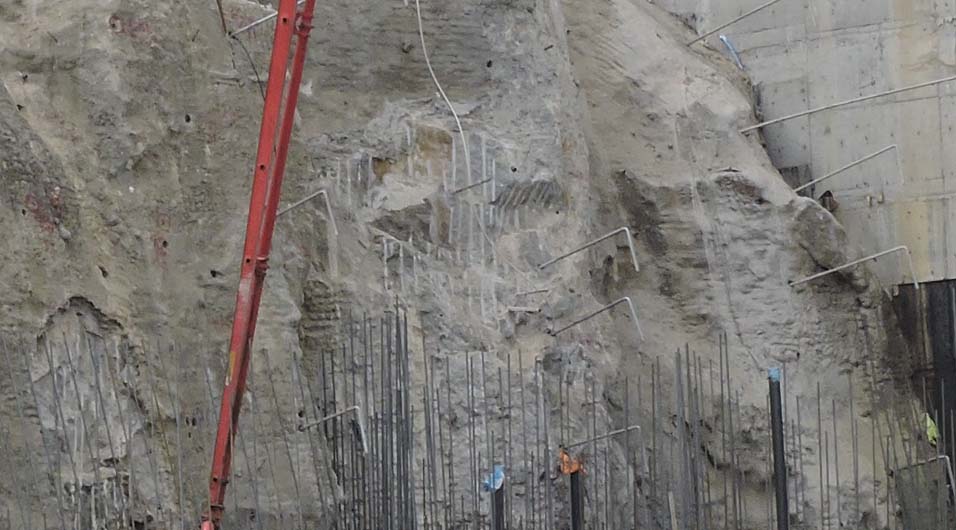The Liquefaction Potential Index (LPI) is a numerical measure of the potential for soil liquefaction. This index can be used to quantify the severity of the liquefaction and take the necessary precautions to avoid it. This is widely used in construction projects where there are concerns about soil liquefaction.
What is Liquefaction
Liquefaction is the process by which a solid material turns into a liquid stage. Due to the applied stress, solid materials lose their strength and stiffness. This is normally caused by an event such as shaking during an earthquake or an increase in the water content.
Liquefaction can lead to instability of the ground and results in failures of the foundations. In this background, special attention is drawn to the structures built in the earthquake prone areas.
Further, liquefaction generally occurs saturated soils such as sandy or silty. Type of soil, grain size, density of soil, water content, intensity of earthquake and during are the key factors connected with the soil liquefaction. As reported, liquefaction has caused sever damaged to the buildings, bridges and many other structures.
How to Interpretate Liquefaction Potential Index
The following rages are considered during the design.
| Liquefaction Potential Index | Potential |
| LPI = 0 | No Liquefaction Potential |
| 0 < LPI ≤ 5 | Low Liquefaction Potential |
| 1.5 < LPI ≤ 15 | Moderate Liquefaction Potential |
| LPI > 15 | High Liquefaction Potential |
Calculation of Liquefaction Potential Index
The following steps can be followed in calculating the potential.
- Soil Investigation
- Determination of Factor of Safety (FS)
Calculate the cyclic stress ratio (CSR) at different depths for stresses induced by the earthquake and evaluate the cyclic resistance ratio (CRR) of soil. Cyclic resistance ratio is the resistance to the liquefaction. Then calculate the factor of safety at different depths.
- Calculation of Liquefaction Severity Index (LSI)
The probability of liquefaction at different factor of safety values can be calculated using empirical equations or models and then formulate to calculate the liquefaction severity at different depths.
- Integration to Obtain LPI
Integrate the LSI values over the depth required to calculate and then evaluate the contribution of each soil layer to the overall liquefaction potential.
Factors Affecting Liquefaction Potential
Soil Properties:
- Grain size distribution: Well-graded soils are less susceptible than poorly graded soils.
- Density: Denser soils have higher resistance to liquefaction.
- Water content: Higher water content increases the likelihood of liquefaction.
Seismic Factors:
- Earthquake magnitude: Larger magnitudes generally induce higher CSR.
- Duration of shaking: Longer durations increase the potential for liquefaction.
- Distance from epicenter: Closer proximity results in stronger shaking.
Groundwater Conditions:
- Depth to the water table: Shallower water tables increase liquefaction risk.
- Seasonal variations: Changes in groundwater levels can affect liquefaction potential.
How to Avoid Soil Liquefaction
Soil Improvement Techniques:
- Compaction: Increasing soil density through methods such as vibrocompaction or dynamic compaction.
- Grouting: Injecting grout into the soil to increase strength and reduce permeability.
- Drainage: Installing drainage systems to lower the water table and reduce pore water pressures.
Structural Measures:
- Design foundations to withstand liquefaction-induced settlements and lateral spreading.
- Use deep foundations, such as piles, to transfer loads to deeper, non-liquefiable soils.
- Implement flexible or articulated structures that can accommodate ground movement.
Planning and Zoning:
- Identify and map liquefaction-prone areas using LPI and other geotechnical data.
- Enforce building codes and land-use regulations that address liquefaction risks.
- Plan critical infrastructure and emergency response strategies considering liquefaction hazards.
The Liquefaction Potential Index (LPI) is a very good tool in geotechnical engineering designs that provides prior indication on the condition of the soil. Also, it provides the degree of risk involved with the particular area referred.


![Tunnel Design [a guide to designers]](https://www.structuralguide.com/wp-content/uploads/2019/11/Tunnel-1-1024x599.jpg)